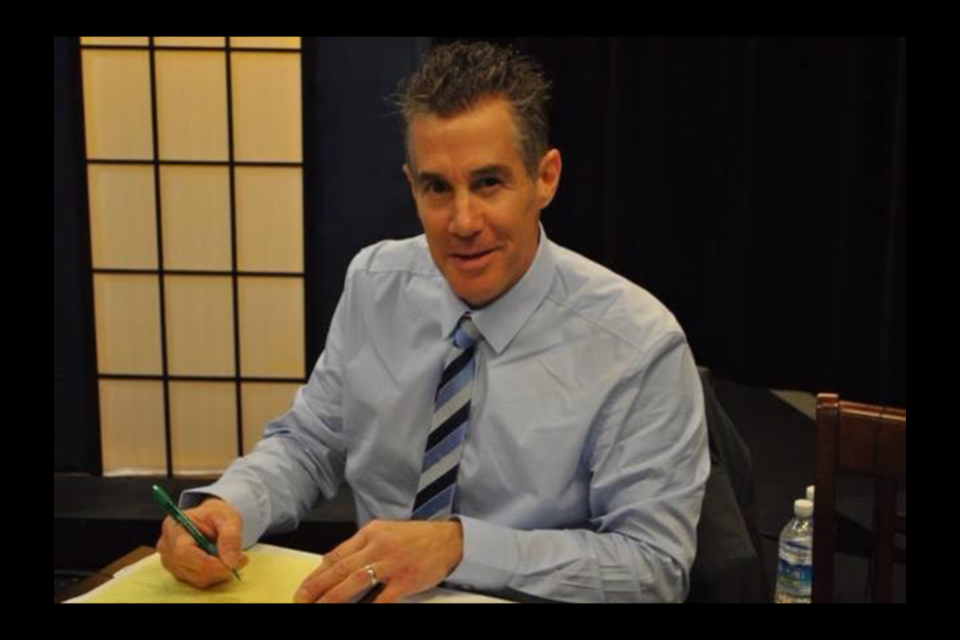With the third wave of the pandemic pushing COVID-19 numbers higher than ever before, it’s now more important than ever that people get vaccinated to control the spread.
I couldn’t be happier to be receiving my Pfizer vaccination this week at the Seymour-Hannah Sports Centre in St. Catharines.
Along with thousands working in education for both Niagara school boards (teachers, custodial staff, early childhood educators, students on educational placement, licensed home childcare and in-home service providers, cafeteria and administrative staff, bus drivers and monitors), I was made eligible for a COVID-19 vaccination during the spring break this week. The news came April 5, first as a rumour via social media, then via an email from the office of District School Board of Niagara Director of Education Warren Hoshizaki.
Niagara became the first region in the province to move toward vaccinating education workers. Other regions quickly followed suit.
Chair Jim Bradley told me in a telephone conversation this Monday that vaccinations for those working in schools was something he had been pushing for. As a former teacher himself, Bradley has a deep understanding of the climate within a school building. And, as the regional chair, he also understands how important it is to parents, and for children’s mental health, that kids remain in school.
“I was in constant conversation with (Niagara’s Community Coordination Task Force for COVID-19 Vaccination) chair Dr. David Dec about this,” Bradley told me. “It’s important to keep schools open to control the spread, and to do that education workers need to be vaccinated.”
Then, later that same day, Premier Doug Ford held his press conference announcing that, despite prioritizing for months keeping schools safe and open for in-class instruction, students across the province would not be returning to in-person learning on April 19.
Ford’s decision was a serious flip-flop, after months of the Ontario government’s resolve to keep schools open. In fact, less than 24 hours before the Premier’s press conference, Minister of Education Stephen Lecce published a letter to parents reiterating his determination to continue with in-person learning.
“During the provincial emergency brake and the provincial stay-at-home order,” said Lecce in Sunday’s
letter, “all publicly funded and private elementary and secondary schools will remain open for in-person learning, with strict health and safety measures in place, except in those regions where local public health units have directed schools in their areas to pivot to remote learning.”
Ford’s announcement may not have been popular with Lecce, but it didn’t surprise anyone in education. Some jurisdictions in the province, including Peel Region, Toronto and Wellington-Dufferin-Guelph, were hit hard enough that their public health departments decided before the break to close schools. Meanwhile, the ministry reported another 217 school-related cases of COVID-19 Monday, including 186 students, 30 staff
and one person who was not identified.
While working at Laura Secord Secondary School, my colleagues and I watched these COVID numbers in schools across the province increase at an alarming rate over the past month or so.
Here in Niagara, both the DSBN and the Niagara Catholic Board (NCDSB) have, for the most part, been able to contain outbreaks in their buildings.
As of press time, the DSBN was reporting 23 active COVID-19 cases and 32 classrooms closed. The NCDSB had 30 active cases, and 110 resolved cases. All schools in both boards were listed as open.
Digging more deeply into the DSBN numbers, it seems four of Laura Secord’s feeder schools (Carleton, Crossroads, Lockview and Prince of Wales) were reporting no current cases, while E.I. McCulley had one and Lincoln Centennial, which had been hit with a number of cases in December, had two.
As a staff member at Laura Secord, this is where it gets a little worrisome. Many of our students, of course, have younger siblings still attending our elementary feeder schools. When the virus affects those younger students, it increases the chance that older siblings living in the same household could unknowingly spread it to our building.
And despite all the safeguards put into place, many education workers have been nervous each and every day when reporting to work. In general, students have a hard time following pandemic protocols. The young brain is still developing, and just doesn’t work the same way as an adult’s.
Where for me, the pandemic is top of mind all the time, for many students, those momentary lapses come naturally, and the COVID protocols are often absent-mindedly broken. It gets exhausting being the one constantly reminding them.
Did the Ford government make the correct decision to keep schools closed after this week’s break? I believe the answer to that question is most definitely yes.
In light of that decision, was the correct decision made a week earlier to vaccinate those working in education? Again, the answer to that question is a resounding yes.
Once students do return to schools, staff members in all roles will be able to more confidently enter the buildings where hundreds of young people attend each and every day. And perhaps with education workers vaccinated this week, that return to school will come much more quickly than it would have otherwise.
So I know where I will be this Thursday at 9 a.m. Smiling joyously for the first time in my life at offering up my shoulder for the jab of that needle.



